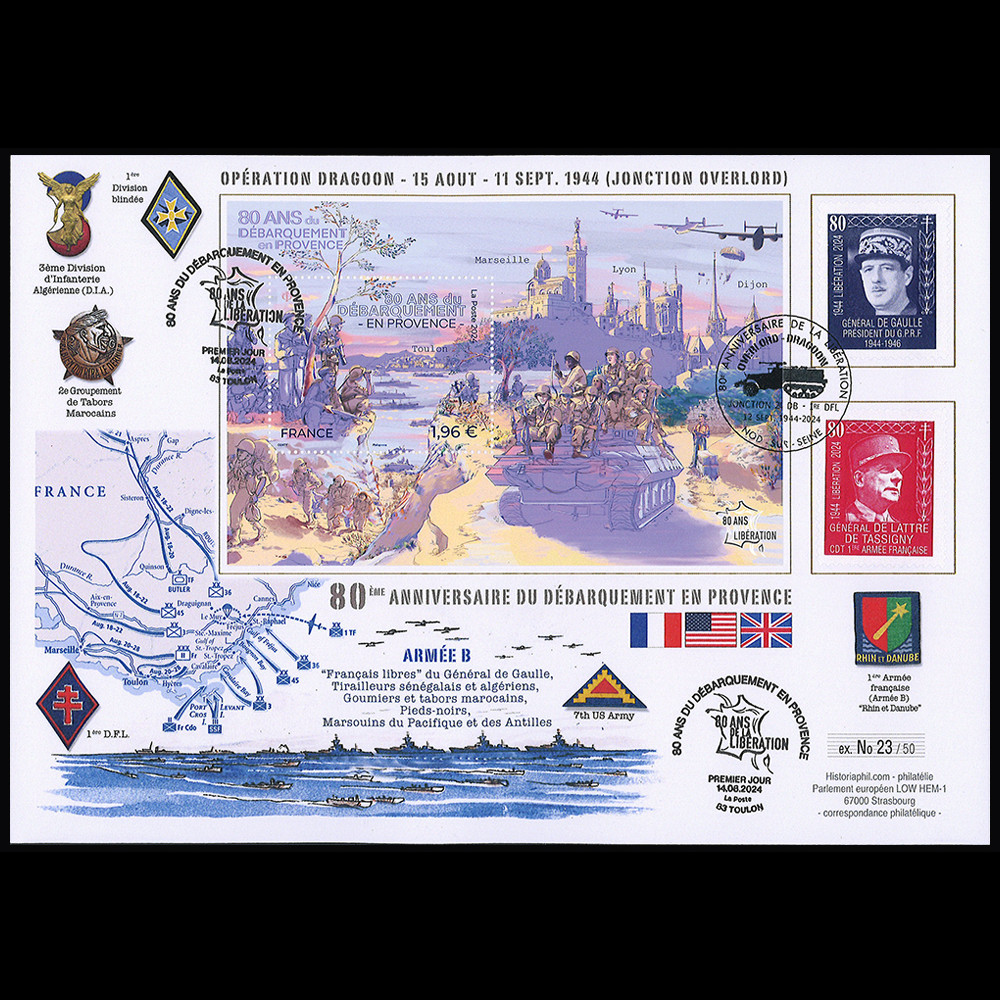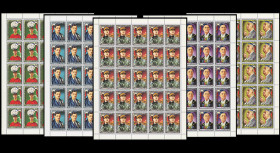80th anniversary of the Liberation and Landing in Provence (South France D-Day) 1944-2024
On August 15, 1944, the Allies decided to launch Operation Dragoon on the coast of Provence, intended to open a second front on French territory. The aims of this operation were to pin down enemy troops, to have deep-water ports and then to protect the right flank of the American army coming from Normandy. 2,000 warships and as many planes would participate.
General Patch's 7th American Army, which included the French forces of Army B commanded by General de Lattre de Tassigny, arrived in sight of the coast on the night of August 14 to 15. That same evening, the French Forces of the Interior (FFI) received three messages from London, the last of which, "the leader is hungry", signified the launch of operations. Having gathered together off the coast of Corsica ships that had come in ten convoys, for strategic reasons, from ports as far apart as Oran, Naples and Taranto, the Allied fleet first headed for Genoa to deceive the enemy. But on the evening of the 14th, it set sail for the Provençal coast.
Shortly after midnight, while the American Rangers were gaining a foothold in the Levant Islands, the first French commandos seized Cap Nègre and went on to conquer a vital bridgehead around Lavandou. During the night, more than 5,000 Allied paratroopers were dropped over the Argens Valley to block the access routes to the landing zones. They would find support there from the FFI.
At dawn, an aerial and naval bombardment crushed the German batteries. At 8 a.m., the 3rd, 36th and 45th American Infantry Divisions (D.I.U.S.) launched on the coastal beaches between Cavalaire and Saint-Raphaël.
The following days, up to the Rhone Valley
On August 16, the bulk of the French forces began to land. While the American forces were going to move up towards the Durance and the Rhone Valley, Army B had to take Toulon and Marseille, ports vital to the Allied strategy.
On August 20, the encirclement of Toulon began. While the Commandos and the Chocs seized the enemy batteries, Free French, Algerians, "porpoises" of the Coloniale and Senegalese Tirailleurs competed in courage to take the city. The 9th Colonial Infantry Division would finish clearing Toulon of its occupants. On August 28, the German garrison surrendered. At the same time, de Lattre had launched his troops towards Marseille. Aubagne was taken by the Moroccan Tabors. The 3rd Algerian Infantry Division of General de Monsabert took up position on the outskirts of the Phocaean city where the insurrection had broken out. On August 23, riflemen and cuirassiers joined the resistance. Five days of violent fighting would be necessary to reduce the German defenses. The two ports had been conquered a month ahead of schedule. The French armies would now move up the Rhone Valley to push back the enemy and liberate the national territory.
Junction between the Allied Forces of Overlord (Normandy) and "Anvil-Dragoon" (Provence)
On June 6, 1944, the Allied forces landed on the beaches of Normandy as part of Operation "Overlord". On August 15, 1944, Operation "Anvil-Dragoon" allowed the landing of Franco-American forces in Provence. A month later, on September 12, 1944, the 2nd Armored Division (2nd DB) and the 1st Free French Division (1st DFL) joined up at Nod-sur-Seine in Burgundy, closing the noose on the German forces that had been unable to escape the Allied advance towards the northeast.
Source: French Ministry of the Armed Forces.




 100% secure payments
100% secure payments








